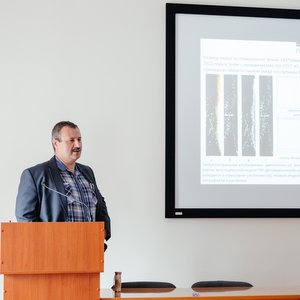At Samara National Research University, the discussion, in which the Management of the SCANEX Company took part, was held, with the University’s leading specialists in geoinformatics, computer optics and development of spacecrafts for the Earth remote sensing to participate.
Academician
Viktor Soifer, President of Samara University, recalled the long-term cooperation of the University with the SCANEX Company, and offered to discuss areas of its development.
“I am sure that the exchange of information on the most significant projects in the field of geoinformatics, computer optics, spacecrafts for the Earth remote sensing, and future development plans in this area will help both the University and the Company to better understand mutual interests, and develop certain proposals for cooperation,” Viktor Soifer stressed.
Marina Sergeeva, Deputy General Director of SCANEX, made the meeting participants acquainted with key areas of the Company’s activities. Now SCANEX continues to develop the network of stations for receiving data from the Earth remote sensing (ERS) spacecrafts of its own design, improves the software, and has launched the process of training its own neural network in the automatic mode.
According to Marina Sergeeva, the Company’s network of operating stations develops, with its integration into the global network underway. Cooperation between SCANEX and its Chinese partners expands, as well. Based on the agreement with the Roscosmos State Corporation, the Company has been preparing to receive the data from spacecrafts developed under the “SPHERE” Federal Project.
Ivan Tkachenko, Director of the Institute of Aviation and Space-Rocket Engineering, told about implementation of the large-scale project on creating the University grouping of nanoclass ERS spacecrafts equipped with hyperspectral devices of their own design.
“The roadmap presented here is being implemented in framework of the “Priority 2030” Program and, in particular, our strategic project “Space for Life.” We understand that today, the subject of hyperspectrometers is very interesting and in demand in the world. Therefore, we have begun work on creation of at once several ERS spacecrafts equipped with such devices,” Ivan Tkachenko said.
Among them, there are two cubesats with hyperspectrometers: 3U format on the GeoScan platform and 6U format on the SPUTNIX platform, which are scheduled to be launched in December 2023, as well as the promising radar device on the base of 12-unit cubesat, being developed jointly with the STC Company.
Vladislav Sergeev, Head of the Department of Geoinformatics and Information Security, told us about opportunities of the Data Receipt and Processing Centre of Samara University. He recalled that the Centre has been operating since December 2006, and all receipt stations used by this division were developed and supplied by SCANEX: two UniScan-24 and one UniScan-36.
Vladislav Sergeev outlined several tasks to be solved for successful implementation of the project within the framework of the “Kubsat” project.
“We have accumulated a lot of experience in receiving and processing data from various ERS spacecrafts. However, specific features of cubesats are as follows: other modes are used when shooting, and the resulting distortions are of the different nature. All this requires modernization of the equipment and, possibly, development of new algorithms for processing incoming data,” Vladislav Sergeev said.
Roman Skidanov, Professor of the Department of Engineering Cybernetics, told about flight tests of the compact hyperspectrometer developed at Samara University and installed on the cubesat 3U SXC3-219 ISOI. This 3U nanosatellite was launched into orbit on August 9, 2022, as part of the Space-Pi project.
“The first surveys and comparison of the hyperspectral images obtained with the images from other spacecrafts showed that our equipment works well. Now we accumulate and study the incoming data,” Roman Skidanov said.
Participants of the conversation discussed the prospects of nanoclass ERS spacecrafts, the nature of scientific-technical problems to be solved by their developers, as well as results to be obtained using hyperspectral and radar surveys from such vehicles.
Following the outcomes of the discussion, the opportunity of upgrading the stations developed by SCANEX, which are at the disposal of Samara University, for the purpose of receiving data from ERS cubesats, will be considered.
